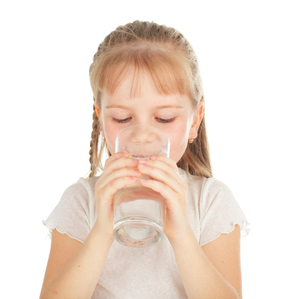Most readers are quite familiar with the sad case of lead contamination in the public water supply of Flint, Michigan. In the wake of that crisis, it was revealed that Flint's problems were by no means unique.
"We have a lot of threats to the water supply," said Dr. Jeffrey K. Griffiths, a professor of public health at Tufts University and a former chairman of the E.P.A.'s Drinking Water Committee. "And we have lots of really good professionals in the water industry who see themselves as protecting the public good. But it doesn't take much for our aging infrastructure or an unprofessional actor to allow that protection to fall apart."
How about this, from a CDC report entitled "Water-related Diseases and Contaminants in Public Water Systems":
"There are many sources of water contamination, including naturally occurring chemicals and minerals (for example, arsenic, radon, uranium), local land use practices (fertilizers, pesticides, concentrated feeding operations), manufacturing processes, and sewer overflows or wastewater releases."
If you need more convincing, check out this article in Scientific American from 2009 entitled "U.S. Drinking Water Widely Contaminated."
Certainly, concerns over the quality and safety of drinking water have pushed many into pricey bottled water, thus creating another problem. In many cases, these bottles can be recycled, but industry estimates suggest that fewer than one-third of them actually are recycled. And, then there's the transportation costs, and fuel expended in shipping... water.
Surely, there must be a more environmentally-responsible—and less expensive—solution. To put it another way, can we design our own water?
The most logical and widespread alternative to bottled water involves the use of in-line filtration of tap water. Such filters employ activated charcoal (aka activated carbon), and are effective in removing many types of contaminants.
Strictly speaking, charcoal is an impure form of graphitic carbon, obtained as a residue when carbonaceous material is partially burned, or heated with limited access of air. Prior to so-called "activation," which is accomplished via a variety of processes (usually encompassing heat-treating), charcoal has a porosity and internal surface in the range of 10-15 square meters/gram.
Upon being activated, the surface area increases dramatically to 1000-1200 square meters/gram. The activation process creates a labyrinth of pores, with pore sizes ranging from less than four nanometers (micro-pores) to greater than 500 nm (macro-pores).
NSF International provides a comprehensive resource for "Selecting a Home Water Treatment System." As you study the options, you might also consider aesthetics and functionality. While researching this piece, I came upon the products of California-based KOR Water.
As KOR founder Eric Barnes puts it: Why couldn't great industrial design—where form and function are meticulously analyzed—be incorporated into a new product line that anticipated the user's every need? There was no law that stated environmentally friendly products must deliver less convenience and inferior performance, yet most "green" alternatives often delivered that experience.
Indeed. KOR brought over 100 functional design requirements to the initial project, and after nearly three painstaking years of development, launched its first product in 2008. Fast forward to their latest product: Water Fall, inspired by the artisanal pour-over coffee method.
Here's to hydration!
